Physical Address
304 North Cardinal St.
Dorchester Center, MA 02124
Physical Address
304 North Cardinal St.
Dorchester Center, MA 02124
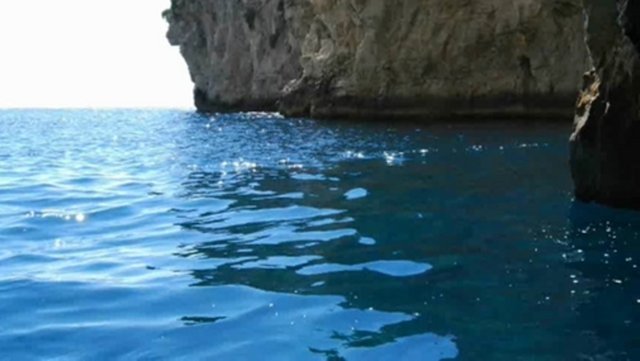
Malta’s Untamed Paradise| Nature & Wildlife Destinations You Simply Cannot Miss
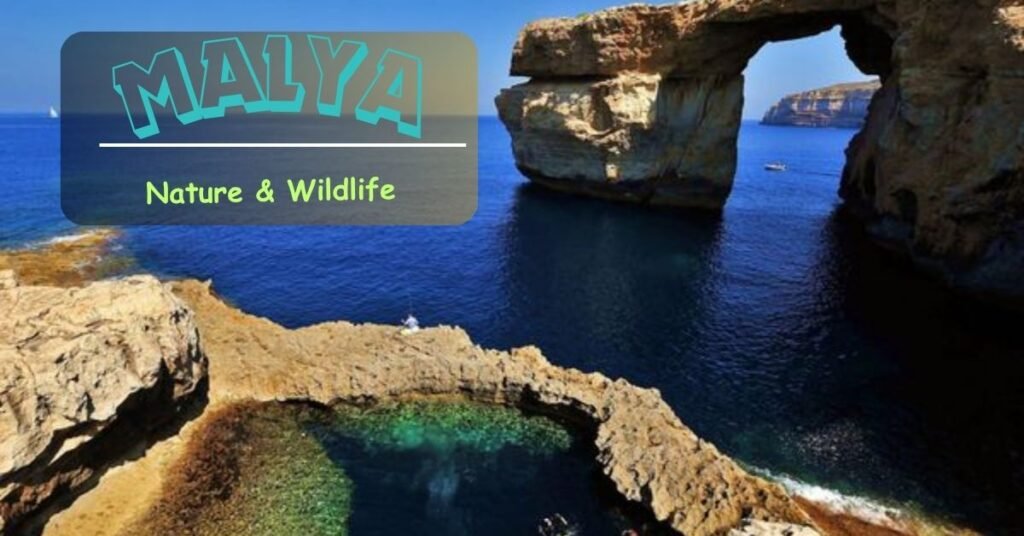
Malta’s Untamed Paradise
Meta Description: Discover Malta’s hidden nature gems and wildlife sanctuaries with budget-friendly travel tips. Explore cheap flights, affordable hotels, and family-friendly outdoor adventures in this Mediterranean paradise.
Picture this: you’re standing on limestone cliffs that have weathered Mediterranean storms for millennia, watching azure waters crash against ancient rocks while seabirds dance overhead. This isn’t just any destination – this is Malta, where nature’s artistry unfolds in the most unexpected ways.
Malta might be famous for its historical treasures, but let me share a secret that locals have known for generations: this tiny archipelago harbors some of Europe’s most spectacular natural wonders. From crystal-clear lagoons that seem almost too blue to be real to bird sanctuaries that serve as crucial stopovers for migrating species, Malta offers ideas for family vacations that go far beyond typical beach holidays.
During my recent exploration of Malta’s wild side, I discovered that this Mediterranean jewel contains undiscovered treasures that rival any destination in Europe. Whether you’re seeking unfamiliar places that offer authentic encounters with nature or searching for undiscovered paradises where you can escape the crowds, Malta delivers experiences that will leave you breathless.
The best part? You don’t need a massive budget to experience Malta’s natural wonders. With careful planning, cheap flights and budget-friendly hotels can make this dream destination accessible to families and solo travelers alike. From locally favored spots known only to residents to internationally recognized nature reserves, Malta’s outdoor offerings cater to every budget and adventure level.

Blue Grotto: Nature’s Cathedral
Have you ever witnessed sunlight transform water into liquid sapphires? The Blue Grotto isn’t just Malta’s most photographed natural wonder – it’s a spiritual experience that connects you directly with the Mediterranean’s raw power.
Located on Malta’s southern coast near Żurrieq, this magnificent sea cave system stretches deep into limestone cliffs, creating an underwater cathedral where light performs daily miracles. The grotto’s name comes from the brilliant blue illumination that occurs when sunlight passes through underwater caverns, reflecting off the white sandy bottom to create an ethereal glow.
Reaching the Blue Grotto requires a short journey from Valletta, approximately 30 minutes by car or 45 minutes by public transport. Bus route 74 connects Valletta to Żurrieq, with stops announced in English and Maltese. From the bus stop, it’s a pleasant 10-minute walk to the viewing area.
For those preferring private transportation, rental cars start from €15 per day during off-season, while taxis from Valletta typically cost €25-30 each way. However, I discovered that joining a nature and wildlife tour group often provides better value, especially for families, with prices starting around €35 per person including transportation and expert commentary.
Standing at the cliff-top viewing platform, you’ll witness nature’s daily light show as waves surge into the cavern below. The morning hours, particularly between 9 AM and 11 AM, offer the most spectacular illumination as the sun reaches the perfect angle to penetrate the underwater chambers.
For the truly adventurous, boat trips operate from nearby Wied iż-Żurrieq, weather permitting. These traditional Maltese fishing boats, called luzzu, navigate carefully into the grotto’s mouth, allowing passengers to experience the magical blue illumination from within. Boat rides cost €8-10 per person and operate from March through October.
The viewing platform is completely free, making this one of Malta’s most accessible natural attractions. Pack a picnic from local shops in Żurrieq – a traditional Maltese ftira sandwich costs just €3-4 and tastes infinitely better when enjoyed overlooking the Mediterranean.
Photography enthusiasts should bring polarizing filters to capture the grotto’s true colors. The limestone formations surrounding the area also provide excellent opportunities for geological exploration and fossil hunting – activities that cost nothing but provide hours of entertainment for curious minds.
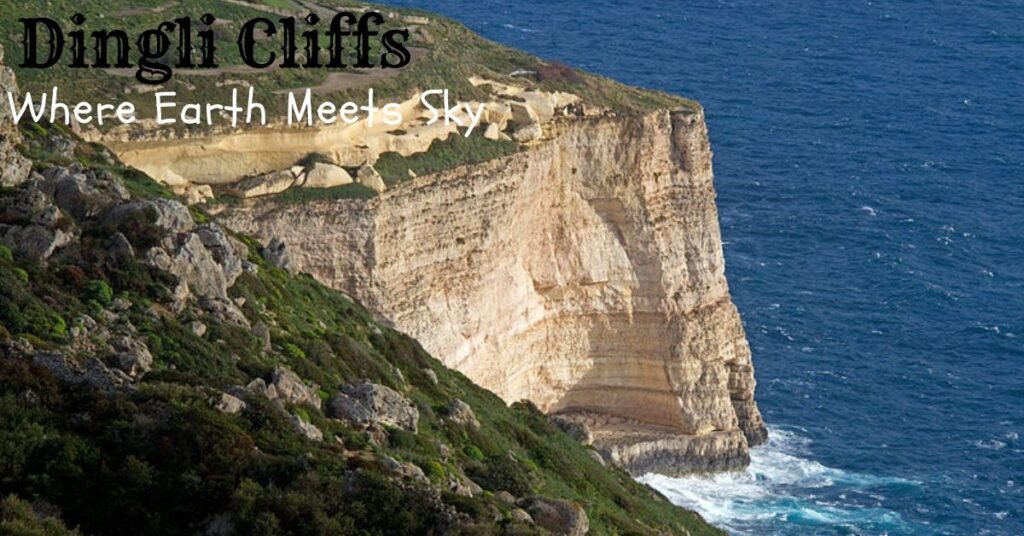
Dingli Cliffs: Where Earth Meets Sky
Imagine standing 250 meters above sea level, where golden limestone cliffs stretch endlessly toward the horizon, and the only sounds are wind whispers and distant wave crashes. Welcome to Dingli Cliffs, Malta’s highest point and perhaps its most breathtaking natural spectacle.
These dramatic cliffs, formed over millions of years through geological processes, represent Malta’s wild western frontier. Unlike the bustling tourist areas, Dingli Cliffs offer solitude and raw natural beauty that speaks directly to the soul. The entire clifftop walk spans approximately 3 kilometers, providing multiple vantage points and photography opportunities.
The Dingli Cliffs walk begins near the village of Dingli, easily accessible by bus route 52 from Valletta. The entire journey takes about 45 minutes, with buses running every 30 minutes during peak season. The walk itself is free and suitable for all fitness levels, though proper footwear is essential due to rocky terrain.
Along the clifftop path, you’ll encounter the mysterious Cart Ruts – ancient grooves carved into limestone whose origins remain debated by archaeologists. These hidden gems provide fascinating insights into Malta’s prehistoric past while offering unique photo opportunities.
Dingli Cliffs are renowned for spectacular sunsets that paint the sky in brilliant oranges, purples, and reds. The Cliffs Interpretation Centre, a small educational facility, provides context about local geology and ecology. Admission is free, and the center operates from 9 AM to 5 PM daily.
For budget-conscious travelers, the nearby Dingli Village offers affordable dining options. Ta’ Pawla restaurant serves traditional Maltese dishes from €8-12, while local bars offer drinks and light snacks for even less. The village also features a small church worth visiting for its historical significance and peaceful atmosphere.
The cliffs serve as important habitat for various bird species, including the rare Blue Rock Thrush and Peregrine Falcons. Spring migration periods (March-May) offer the best wildlife viewing opportunities, with species like Honey Buzzards and various warblers passing through.
Early morning visits reward dedicated nature lovers with the highest probability of wildlife sightings. The cliffs’ diverse ecosystem also supports numerous plant species, including rare Mediterranean endemics that bloom spectacularly in spring.
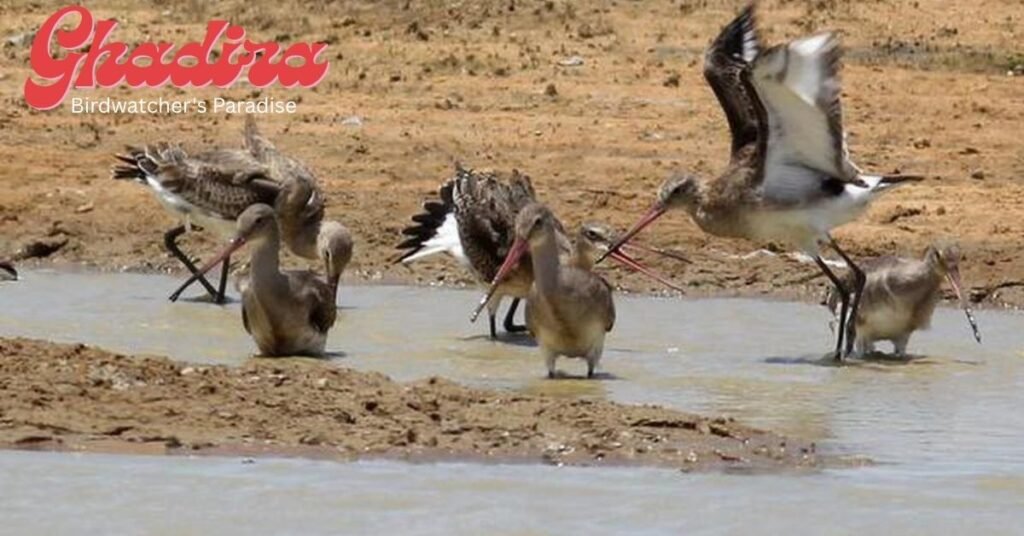
Ghadira Nature Reserve
Hidden behind Malta’s longest sandy beach lies one of the Mediterranean’s most important bird sanctuaries. Ghadira Nature Reserve, managed by BirdLife Malta, represents conservation success in action – a place where locally favored spots meet international conservation standards.
This 6-hectare wetland reserve might seem modest in size, but its impact on Mediterranean bird conservation is enormous. The reserve serves as a crucial stopover point for migrating birds traveling between Europe and Africa, hosting over 150 species throughout the year.
Access to Ghadira Reserve is free, though donations are welcomed to support conservation efforts. The reserve features several well-maintained hides that allow close observation of wildlife without disturbance. Binoculars are available for loan, making this accessible even for spontaneous visitors.
The main trail through the reserve takes approximately 45 minutes to complete, with informational panels explaining the ecosystem’s importance. During my visit, I observed Purple Herons, Little Egrets, and numerous warbler species – sightings that would cost hundreds of euros to experience on specialized birding tours elsewhere.
Dawn and dusk provide optimal wildlife viewing conditions. The reserve opens at sunrise and closes at sunset, allowing dedicated birdwatchers to experience the full spectrum of avian activity. Spring migration (March-May) and autumn passage (September-November) offer the most diverse species counts.
The adjacent Mellieha Bay provides additional opportunities for shorebird observation, while the surrounding countryside hosts resident species like Sardinian Warblers and Zitting Cisticolas. This combination makes Ghadira an ideal destination for family trip planning that incorporates education and entertainment.
BirdLife Malta regularly organizes guided walks and educational programs, particularly during migration seasons. These free events provide expert knowledge about bird identification, migration patterns, and conservation challenges. The organization’s visitor center offers resources for independent exploration and species identification.
For families traveling with children, the reserve provides an excellent introduction to Mediterranean ecology. The flat, easy terrain and abundant wildlife create engaging experiences that spark curiosity about nature and conservation.
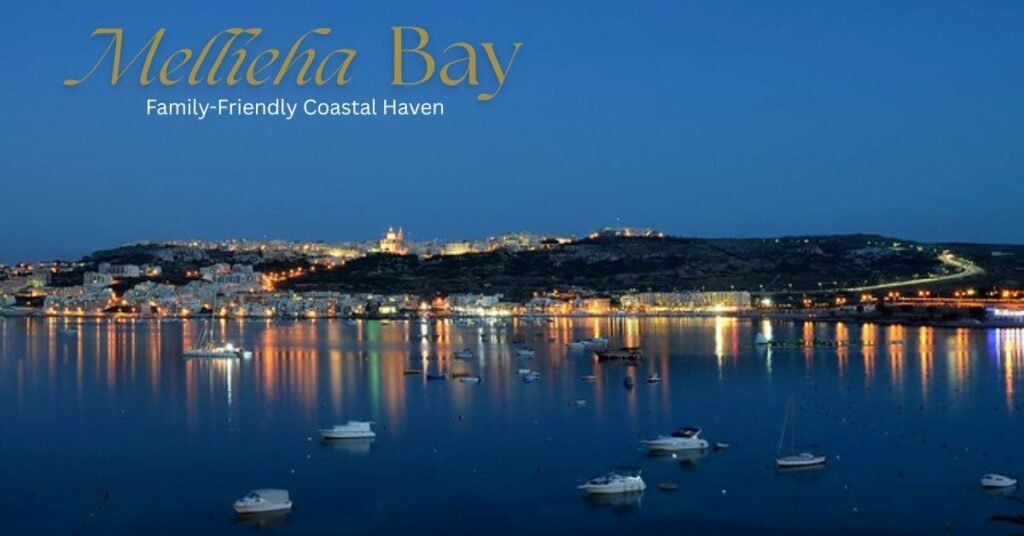
Mellieha Bay
Malta’s longest sandy beach stretches like a golden crescent along the northern coast, but Mellieha Bay offers far more than sunbathing opportunities. This destination combines beach relaxation with rich natural experiences, making it perfect for families seeking diverse outdoor adventures.
The bay’s shallow, gradually deepening waters create ideal conditions for swimming and snorkeling, while the surrounding landscape provides hiking opportunities and cultural exploration. The combination of accessibility and natural beauty makes Mellieha Bay an essential stop for anyone exploring Malta’s wild side.
Mellieha Bay’s clear waters host diverse marine life, from colorful fish species to occasional dolphin sightings. The rocky areas at both ends of the bay provide excellent snorkeling opportunities, with underwater visibility often exceeding 20 meters during calm conditions.
Equipment rental is available from several beachside operators, with snorkeling gear starting from €10 per day. However, budget-conscious families can purchase basic equipment from local shops for similar prices, allowing unlimited use throughout their stay.
The Mellieha area offers accommodation options for every budget level:
Budget Options (€30-50 per night):
Mid-Range Options (€50-100 per night):
Luxury Options (€100+ per night):
Beyond beach activities, Mellieha Bay serves as a gateway to cultural experiences that showcase Malta’s rich heritage. The nearby Mellieha Parish Church, built into a cave, offers insight into local religious traditions and architectural history.
Adventure enthusiasts can explore the historical wonders of the area, including World War II shelters and ancient cart ruts. The Red Tower, a 17th-century fortification, provides panoramic views and historical context about Malta’s strategic importance.
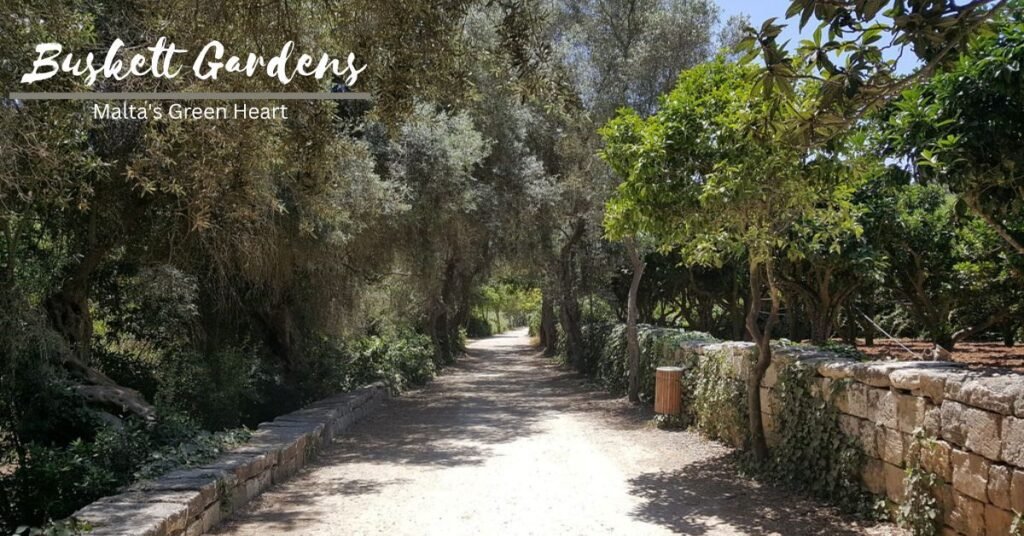
Buskett Gardens: Malta’s Green Heart
In a country where green spaces are precious commodities, Buskett Gardens stands as Malta’s largest woodland area – a verdant oasis that offers respite from Mediterranean heat and urban development. This undiscovered paradise represents Malta’s commitment to preserving natural heritage while providing accessible recreation for all.
Located near Rabat, Buskett Gardens covers approximately 1,000 hectares of mixed woodland, agricultural land, and natural habitat. The gardens were originally created by the Knights of St. John as hunting grounds, but today they serve as Malta’s primary nature reserve and recreational area.
The main entrance near Verdala Palace provides access to well-maintained walking trails that wind through diverse ecosystems. The gardens feature both native Mediterranean species and introduced trees, creating a unique botanical environment that changes dramatically with the seasons.
Autumn transforms Buskett into a photographer’s paradise, with deciduous trees displaying brilliant colors rarely seen elsewhere in Malta. The gardens’ official picnic areas include barbecue facilities and tables, making this an ideal destination for budget-friendly family outings.
Buskett Gardens support Malta’s most diverse wildlife populations, including resident bird species, migrating visitors, and various mammals. The wooded areas provide crucial habitat for species like the Maltese Wall Lizard and various bat species that roost in the gardens’ caves and old trees.
The gardens’ conservation program includes educational trails with interpretive signs explaining local ecology and conservation challenges. These self-guided tours provide valuable learning opportunities without additional costs, making Buskett an excellent destination for families interested in environmental education.
Spring brings wildflower blooms that carpet the forest floor with color, while summer offers shaded refuge from Malta’s intense heat. The gardens’ elevated position provides cooler temperatures than coastal areas, making them particularly popular during hot weather.
The annual Folk Festival, held in late June, showcases traditional Maltese music, dance, and crafts against the gardens’ natural backdrop. This free event provides authentic cultural experiences that connect visitors with local traditions and community life.
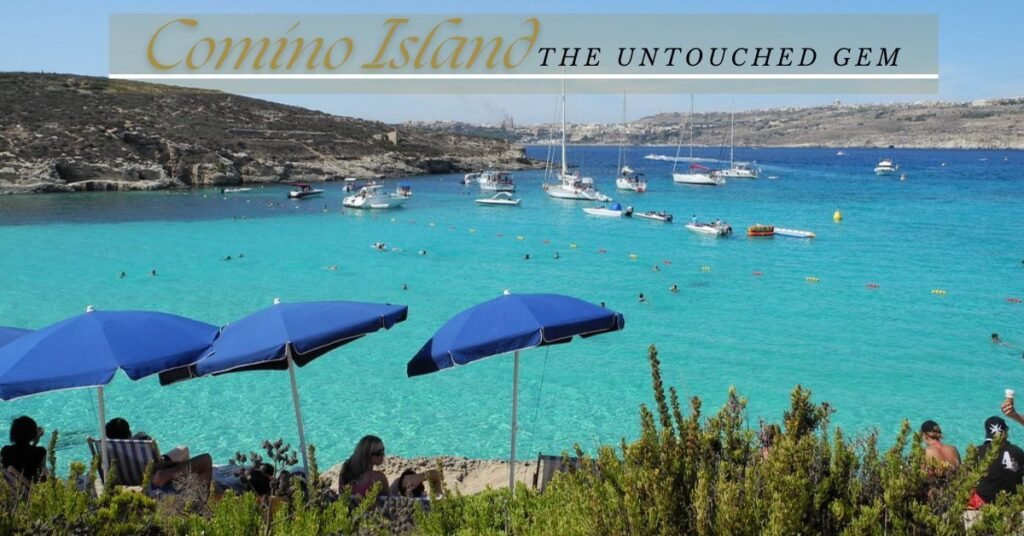
Comino Island: The Untouched Gem
Between Malta and Gozo lies a tiny island that embodies Mediterranean perfection – Comino, where crystal-clear waters meet unspoiled landscapes in a setting that seems almost too beautiful to be real. This 3.5-square-kilometer island offers some of Europe’s most pristine natural environments, accessible yet wonderfully remote.
Comino’s car-free environment and minimal development create an authentic escape from modern life. The island’s year-round population of just four people maintains a sense of wilderness that’s increasingly rare in the Mediterranean. This makes Comino a perfect destination for travelers seeking unfamiliar places that offer genuine solitude and natural beauty.
Comino’s most famous attraction, the Blue Lagoon, features waters so clear and blue they appear artificial. This natural swimming pool, created by the narrow channel between Comino and tiny Cominotto, offers visibility that extends to the sandy bottom several meters below.
The lagoon’s popularity means summer crowds, but early morning or late afternoon visits provide more peaceful experiences. The contrast between the lagoon’s turquoise waters and the surrounding white limestone creates photographic opportunities that capture the essence of Mediterranean beauty.
Regular ferry services operate from both Malta and Gozo, with prices starting from €15 return during high season. The journey from Malta takes approximately 20 minutes, while Gozo departures take just 10 minutes. These small boats provide scenic transportation that’s part of the adventure.
Budget-conscious travelers can join organized day trips that include transportation, lunch, and sometimes snorkeling equipment for €35-45 per person. However, independent travelers often find better value by taking regular ferries and bringing their own supplies.
Beyond the Blue Lagoon, Comino offers hiking trails that traverse the island’s varied terrain. The walk to Santa Marija Bay, the island’s second-most popular beach, takes about 20 minutes through Mediterranean scrubland that supports diverse plant life and bird species.
The island’s historical wonders include a 17th-century watchtower and the remains of a small chapel. These sites provide cultural context while offering elevated viewpoints for photography and wildlife observation.
Comino serves as an important breeding ground for seabirds, including Yellow-legged Gulls and various tern species. The island’s protected status ensures these populations remain undisturbed, making it an excellent destination for wildlife photography and observation.
The surrounding waters support diverse marine life, from small reef fish to occasional larger species like grouper and moray eels. Snorkeling around the island’s rocky coastline reveals underwater landscapes that rival any Mediterranean destination.

Filfla Island: Wildlife Sanctuary
Visible from Malta’s southern coast, the small rocky islet of Filfla represents one of the Mediterranean’s most important seabird colonies. While landing on Filfla is prohibited to protect its wildlife, the island plays a crucial role in Malta’s marine ecosystem and offers fascinating viewing opportunities from the mainland.
This uninhabited rock, rising 60 meters above sea level, supports thousands of seabirds during breeding season. The island’s protected status since 1988 has allowed wildlife populations to recover from centuries of hunting pressure, creating a conservation success story that demonstrates the Mediterranean’s resilience.
The best mainland viewing points for Filfla are from the Blue Grotto area and nearby Hagar Qim temples. Binoculars reveal the island’s steep cliffs and the constant activity of seabirds that nest on its ledges. During spring breeding season, the island becomes a bustling avian metropolis.
Boat trips from nearby harbors provide closer views of Filfla’s wildlife, though regulations require boats to maintain specific distances from the island. These excursions often combine Filfla viewing with visits to other coastal attractions, providing comprehensive marine experiences.
Filfla serves as a crucial breeding site for Storm Petrels, one of Malta’s most threatened seabird species. The island’s protection has allowed these populations to stabilize, contributing to Mediterranean-wide conservation efforts for marine birds.
The surrounding waters are also protected, creating a marine reserve that supports diverse fish populations and provides feeding grounds for the island’s bird colonies. This integration of terrestrial and marine conservation demonstrates effective ecosystem management.
Professional wildlife photographers often visit Malta specifically to photograph Filfla’s seabird colonies. The island’s dramatic profile against Mediterranean sunsets creates stunning silhouettes, while telephoto lenses reveal the intricate behaviors of nesting birds.
Various research projects monitor Filfla’s wildlife populations, contributing to scientific understanding of Mediterranean seabird ecology. These studies provide valuable data for conservation planning and help track the effects of climate change on island ecosystems.
Navigating Malta’s natural wonders requires strategic transportation planning, but the island’s compact size makes exploration remarkably manageable. Whether you’re budget-conscious or seeking convenience, Malta offers transportation options that connect you with every natural destination.
Malta’s public bus system, operated by Malta Public Transport, provides extensive coverage of the island at incredibly affordable prices. Day passes cost just €2.60, while weekly passes are €12, making public transport the most economical option for extended exploration.
The bus network connects all major natural attractions, though some remote locations require short walks from bus stops. Route 74 serves the Blue Grotto area, while Route 52 reaches Dingli Cliffs. The X1 express service connects Valletta to major tourist areas quickly and efficiently.
Car rental starts from €15 per day during off-season, rising to €25-30 in summer. International driving permits are required for visitors, and parking can be challenging in popular areas. However, cars provide maximum flexibility for exploring remote natural sites.
Scooter rental offers an economical alternative, starting from €10 per day. The island’s small size makes scooters practical for most destinations, though they’re not suitable for families with young children or those carrying extensive equipment.
Licensed taxis operate from designated stands and can be hailed on the street. Prices are regulated, with trips between major attractions typically costing €15-25. For groups or families, splitting taxi costs often proves more economical than individual public transport tickets.
Ride-sharing apps like Bolt operate in Malta, often providing competitive pricing and convenient booking. These services are particularly useful for early morning or late evening trips when public transport is limited.
Malta’s compact size makes walking a viable option for connecting nearby attractions. The coastal path between Mellieha Bay and Ghadira Nature Reserve, for example, takes just 30 minutes on foot and provides scenic views throughout the journey.
Bicycle rental is available from various operators, starting from €8 per day. However, Malta’s hilly terrain and narrow roads make cycling challenging for inexperienced riders. Electric bikes, available for €15-20 per day, address these challenges and provide eco-friendly transportation.
Malta’s accommodation scene has evolved to serve every budget level, from backpacker hostels to luxury resorts. Smart travelers can find comfortable lodging that doesn’t compromise their budget for exploring natural wonders.
Malta’s hostel scene offers excellent value for budget-conscious travelers. Hostel Malti in Sliema provides dormitory beds from €15 per night, with private rooms from €40. The hostel’s central location provides easy access to public transport and major attractions.
Budget hotels like the Phoenicia Express and various guesthouses offer private rooms with basic amenities starting from €25-35 per night. These accommodations often include breakfast and provide local knowledge about natural attractions and transportation options.
The sweet spot for most travelers lies in Malta’s mid-range accommodation sector. Hotels like the Solana Hotel and numerous vacation rentals provide comfortable rooms with amenities like air conditioning, private bathrooms, and often pool access for €50-80 per night.
Self-catering apartments offer particular value for families and groups, allowing meal preparation that significantly reduces daily expenses. These accommodations often include kitchen facilities, washing machines, and multiple bedrooms, making them ideal for extended stays.
For travelers seeking premium experiences, Malta offers world-class resorts and boutique hotels. The Radisson Blu Resort in Mellieha provides beachfront luxury with spa services, multiple restaurants, and extensive recreational facilities. Prices start from €120 per night during off-season.
Boutique hotels in Valletta and other historic areas offer unique experiences that combine luxury with cultural immersion. These properties often feature restored historic buildings, personalized service, and prime locations for exploring both natural and cultural attractions.
Vacation rental platforms offer diverse options from traditional Maltese houses to modern apartments. These properties often provide better value for longer stays and allow travelers to experience local neighborhoods beyond tourist areas.
Camping is limited in Malta, but some facilities exist for adventurous travelers. The Malta Youth Hostel Association operates a camping ground near Mellieha, providing budget accommodation with basic facilities in a natural setting.
Malta’s culinary landscape reflects its position at the crossroads of Mediterranean cultures, offering dining experiences that range from €3 street food to Michelin-starred establishments. For nature lovers, many restaurants celebrate local ingredients and traditional recipes that connect food with the island’s natural heritage.
Traditional Maltese street food provides authentic flavors at unbeatable prices. Pastizzi, flaky pastries filled with ricotta or peas, cost just €0.50 each and are available from numerous vendors throughout the island. The best pastizzi come from neighborhood shops where locals queue alongside tourists.
Ftira, Malta’s traditional sandwich bread, creates hearty meals for €3-5. Local shops prepare these sandwiches with fresh ingredients, often including gbejniet (Maltese goat cheese) and sun-dried tomatoes. These portable meals are perfect for picnics at natural attractions.
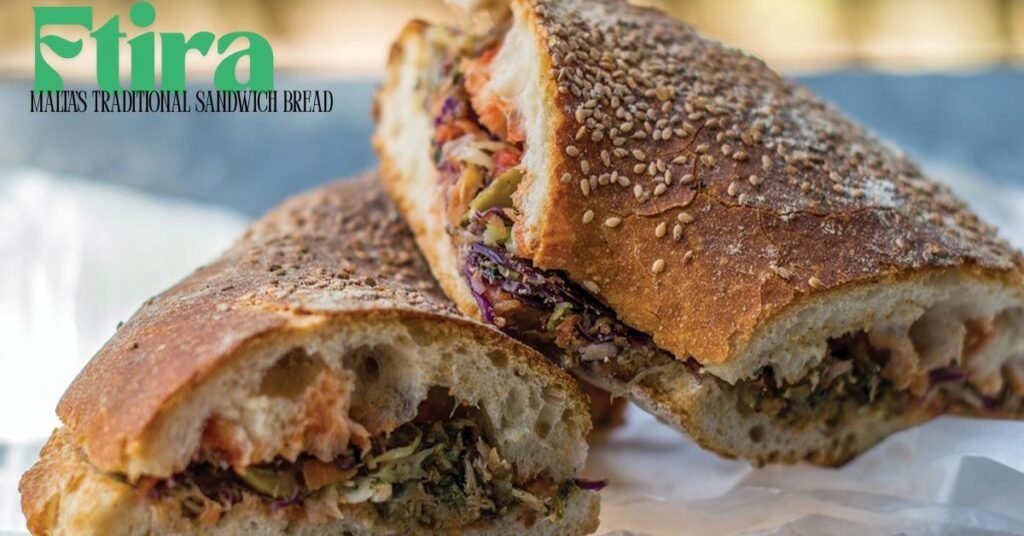
Ftira, Malta’s traditional sandwich bread
Malta’s village restaurants offer authentic dining experiences at reasonable prices. Tal-Petut in Birgu serves traditional Maltese dishes from €8-12, while Ninu in Valletta provides fresh seafood in a casual atmosphere for similar prices.
Local trattorias throughout the island specialize in seasonal menus that showcase Malta’s agricultural heritage. Spring brings wild asparagus and qaqocc (artichokes), while summer features fresh fish and Mediterranean vegetables. These seasonal specialties often cost less than imported alternatives.
Malta’s mid-range restaurants balance quality and value effectively. Rubino in Valletta, a family-run institution since 1906, serves excellent seafood and traditional dishes for €15-25 per person. The restaurant’s longevity testifies to its consistent quality and fair pricing.
Coastal restaurants often provide spectacular views alongside quality cuisine. Ta’ Pawla near Dingli Cliffs offers traditional Maltese dishes with sunset views, while Rebekah’s in Mellieha Bay specializes in fresh seafood with beach access.
For special occasions, Malta’s fine dining scene provides world-class experiences. Noni in Valletta earned a Michelin star for its innovative approach to Maltese cuisine, while Under Grain offers contemporary Mediterranean cuisine in elegant surroundings.
These establishments often feature tasting menus that showcase Malta’s culinary evolution, incorporating traditional techniques with modern presentations. Prices range from €80-150 per person for multi-course experiences.
Participating in cooking classes provides deeper connections with Maltese culture while developing practical skills. Various operators offer classes focused on traditional dishes, often including market visits and recipe books. These experiences typically cost €40-60 per person.
Food tours combine culinary exploration with cultural insights, visiting local markets, artisan producers, and family-run restaurants. These guided experiences provide context about Malta’s food traditions and access to establishments that might otherwise be difficult to find.
Traveling to Malta with family doesn’t require compromising on experiences or breaking the bank. Smart planning and local knowledge can create memorable adventures while maintaining reasonable budgets.
Family bus passes offer significant savings for groups traveling together. Weekly passes cost just €12 per person, while children under 16 travel free when accompanied by parents. This combination can reduce transportation costs by 70% compared to individual tickets.
Rental car sharing among families traveling together creates additional savings. Splitting costs for vehicles, fuel, and parking often proves more economical than public transport for groups of four or more, especially when visiting multiple natural attractions in single days.
Self-catering accommodations allow families to control meal costs while providing flexibility for dietary requirements. Vacation rentals with kitchen facilities typically cost 30-40% less than hotels when factoring in meal savings.
Booking directly with smaller hotels and guesthouses often results in better rates than booking platforms. Many family-run establishments offer discounts for extended stays or provide additional services like laundry facilities at no extra charge.
Shopping at local markets and supermarkets provides significant savings over restaurant meals. The Valletta market operates Saturday mornings, offering fresh produce, local specialties, and artisan products at wholesale prices.
Picnicking at natural attractions combines cost savings with enhanced experiences. Many of Malta’s natural sites provide perfect picnic settings, and local foods often taste better when enjoyed in outdoor settings with spectacular views.
Malta offers numerous free natural attractions that provide world-class experiences without admission fees. The Dingli Cliffs, Ghadira Nature Reserve, and various hiking trails offer entertainment value that rivals paid attractions elsewhere.
Educational programs at nature reserves and cultural sites often operate free of charge, providing learning opportunities that enhance family travel experiences. These programs typically require advance booking but offer insights unavailable to casual visitors.
Visiting during shoulder seasons (April-May, September-October) provides optimal weather conditions while reducing accommodation costs by 40-60%. These periods also offer smaller crowds at popular attractions and more personalized service at restaurants and tourist sites.
Off-season travel (November-March) delivers the greatest savings potential, with accommodation discounts up to 70% and reduced prices for activities and dining. While some attractions may have limited hours, the major natural sites remain accessible and equally spectacular.
Understanding Malta’s cultural context enhances appreciation of its natural wonders while ensuring respectful interactions with local communities. The island’s unique position between Europe and Africa has created distinct traditions that influence how locals relate to their natural environment.
Maltese culture traditionally emphasizes conservation and resourcefulness, born from centuries of living on a small island with limited resources. This heritage creates strong environmental awareness among locals, who often serve as unofficial guardians of natural sites.
Visitors should respect this conservation ethic by following Leave No Trace principles, staying on designated paths, and avoiding damage to vegetation or wildlife. These practices align with local values and ensure natural sites remain pristine for future generations.
Malta’s Catholic heritage influences daily life and social interactions. Sunday mornings are traditionally reserved for religious observance, which may affect business hours and activity availability. Planning around these patterns shows cultural sensitivity and often provides quieter natural experiences.
Greeting locals with basic Maltese phrases demonstrates respect and often results in valuable local knowledge about natural attractions. Simple phrases like “Bongu” (good morning) and “Grazzi” (thank you) create positive interactions that can enhance travel experiences.
Local fishermen, farmers, and hunters possess extensive knowledge about Malta’s natural cycles, weather patterns, and wildlife behaviors. Engaging respectfully with these community members often reveals insights about optimal viewing times, seasonal changes, and hidden natural treasures.
Many locals are eager to share stories about traditional relationships with nature, from ancient fishing techniques to seasonal food gathering. These conversations provide cultural context that enriches understanding of Malta’s natural heritage.
Visitors can contribute to Malta’s conservation efforts through various volunteer programs and citizen science projects. Organizations like BirdLife Malta welcome international volunteers for bird monitoring, habitat restoration, and educational programs.
Participating in beach cleanups, wildlife monitoring, or educational activities provides meaningful ways to give back to destinations while gaining deeper insights into conservation challenges and successes.
Malta’s Mediterranean climate creates distinct seasons that affect natural experiences, wildlife viewing, and overall travel conditions. Understanding these patterns helps optimize timing for specific interests while managing costs and crowds.
Spring represents Malta’s peak season for nature enthusiasts, combining optimal weather conditions with spectacular wildlife activity. Migrating birds pass through in tremendous numbers, wildflowers bloom across the countryside, and temperatures remain comfortable for extended outdoor activities.
Average temperatures range from 15-22°C (59-72°F), with increasing daylight hours and minimal rainfall. This period offers the best combination of pleasant weather and natural activity, though accommodation prices reflect the popularity of spring travel.
Summer brings hot, dry conditions that favor beach activities and water sports but can be challenging for hiking and wildlife viewing. Average temperatures reach 25-30°C (77-86°F), with intense Mediterranean sun that requires careful planning for outdoor activities.
Early morning and late afternoon provide the best conditions for nature exploration, while midday hours are ideal for swimming and water-based activities. Accommodation costs peak during summer, but the extended daylight hours maximize activity opportunities.
Autumn offers excellent conditions for nature lovers, with comfortable temperatures, reduced crowds, and active wildlife populations. Fall migration brings different bird species than spring, creating new viewing opportunities for dedicated naturalists.
Temperatures range from 20-25°C (68-77°F) in early autumn, gradually cooling through November. This period provides optimal conditions for hiking, cycling, and extended outdoor exploration while maintaining warm enough conditions for swimming.
Winter in Malta remains mild by European standards, with temperatures rarely dropping below 10°C (50°F). While swimming may be uncomfortable for most visitors, winter offers unique opportunities for wildlife viewing and cultural exploration.
Storm watching from coastal cliffs provides dramatic natural spectacles, while reduced tourism creates more intimate experiences at natural sites. Accommodation costs reach their lowest levels, making winter ideal for budget-conscious travelers.
Most visitors can enter Malta without advance visa arrangements, as the country participates in the Schengen Agreement. EU citizens need only valid identification, while visitors from many countries including the US, Canada, and Australia can stay up to 90 days with valid passports.
For longer stays or specific activities like research or volunteer work, advance visa arrangements may be required. The Malta Immigration website provides current requirements and application procedures for various visitor categories.
Malta’s natural wonders offer experiences that linger in memory long after departure. From the ethereal beauty of the Blue Grotto to the wild serenity of Comino Island, this Mediterranean gem provides undiscovered treasures that reward curious travelers with authentic encounters with nature.
The island’s compact size allows comprehensive exploration within reasonable budgets, while its rich cultural heritage adds depth to every natural experience. Whether seeking family vacation ideas that combine education with adventure or searching for locally favored spots that provide authentic experiences, Malta delivers on every level.
Smart planning enables remarkable experiences without financial stress. By choosing cheap flights and budget-friendly hotels, utilizing public transportation, and taking advantage of free natural attractions, families and individual travelers can create unforgettable memories while maintaining responsible budgets.
Malta’s natural heritage represents more than tourist attractions – these spaces embody the island’s commitment to conservation and sustainable tourism. By visiting respectfully and supporting local conservation efforts, travelers contribute to preserving these undiscovered paradises for future generations.
Don’t let this opportunity pass by. Start planning your Malta adventure today with Travel Go Easy, your trusted partner for affordable travel experiences. Our comprehensive planning travel trips services ensure you’ll discover Malta’s natural treasures without breaking the bank.
Whether you’re dreaming of family adventures, romantic getaways, or solo exploration, Malta’s natural wonders await your discovery. Book your cheap flights and budget-friendly hotels today and prepare for the adventure of a lifetime!
Q: What’s the best time to visit Malta for wildlife viewing? A: Spring (March-May) and autumn (September-November) offer optimal wildlife viewing conditions, with peak bird migration activity and comfortable temperatures for outdoor exploration.
Q: Are Malta’s natural attractions suitable for families with young children? A: Yes, most natural attractions offer family-friendly experiences. Mellieha Bay, Buskett Gardens, and Ghadira Nature Reserve provide safe environments with facilities suitable for children.
Q: How much should I budget for a week-long nature-focused trip to Malta? A: Budget travelers can expect to spend €50-70 per day including accommodation, meals, and activities. Mid-range travelers typically spend €80-120 per day for more comfortable accommodations and dining.
Q: Do I need special equipment for Malta’s natural attractions? A: Basic equipment like comfortable walking shoes, sunscreen, and water bottles are essential. Binoculars enhance wildlife viewing, while snorkeling gear opens underwater exploration opportunities.
Q: Is Malta suitable for solo travelers interested in nature? A: Absolutely. Malta’s small size, safe environment, and excellent public transportation make it ideal for solo exploration. Many natural sites offer peaceful settings perfect for individual reflection and photography.
Q: What should I know about Malta’s conservation efforts? A: Malta has made significant commitments to environmental protection, with numerous nature reserves and marine protected areas. Visitors can support these efforts by following conservation guidelines and participating in volunteer programs.
This article is exclusively created for and copyrighted by TravelGoEasy.net. Reproduction or unauthorized use is strictly prohibited. All content is original and protected by copyright law.